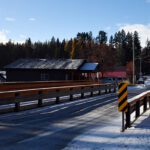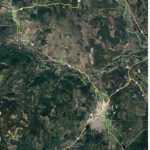Home »

Trench Society tours unique grasslands
Directors of the Rocky Mountain Trench Natural Resources Society toured sites around the Koocanusa reservoir recently and came away with an increased sense of urgency that the hugely popular recreation area requires Crown land access regulations to protect its unique grasslands.
“The Koocanusa grasslands are special. There is nothing quite like them in southeastern B.C.,” said Trench Society Chair Robyn Duncan. “These are sensitive ecosystems that are highly vulnerable to uncontrolled recreational use. Access management is the key to protecting them.”

The Koocanusa area attracts as many as 100,000 visitors over the summer, with up to 25,000 people camping, quading, dirt biking, mountain biking and boating on long weekends.
The cumulative impacts put huge pressure on critical wildlife habitat and rare plant communities, increase the spread of invasive species and disturb First Nations archaeological and cultural heritage sites.
The area supports key winter range for elk, moose, bighorn sheep and mule deer, and provides habitat for a majority of this region’s at-risk species, including American badgers, long-billed curlews, Williamson’s sapsuckers and Lewis’s woodpeckers. Local ranchers also depend on the area’s grasslands and open forests for livestock grazing.
The Trench Society tour was led by Grasmere rancher Yvonne Miller, a member of the Koocanusa public advisory group that is helping to develop access management plans for camping and trail use on designated Crown land sites.
Recreation officer Lisa Cox and natural resource officers Brett Hutchinson, Jamie Mercier and Aaron Gervais from the Ministry of Forests, Lands and Natural Resource Operations described the challenges of implementing the Koocanusa recreation strategy, released earlier this year.
The society is a long-time supporter of these ongoing efforts by the BC government, Ktunaxa Nation, Regional District of East Kootenay and Columbia Basin Trust to protect Koocanusa’s environmental values. Society coordinator Dan Murphy sits on the public advisory committee.
About 1,600 hectares (3,900 acres) of East Kootenay grasslands were flooded in the 1970s when the Libby Dam in Montana created the 144-kilometre Koocanusa reservoir along the Kootenay River. Almost half the reservoir backs up into B.C., between Wardner and the U.S. border. Recreational development in recent years has resulted in the loss of yet more grassland habitat.
In 2007 the Trench Society launched its ground-breaking Waldo North restoration project to restore habitat and improve livestock grazing on close to 2,000 hectares (4,900 acres) on the east side of the reservoir.
The society is a coalition of 11 hunting, ranching, environmental and wildlife organizations dedicated to restoring and conserving grassland and open forest ecosystems in the East Kootenay and Upper Columbia Valley.
Member organizations are Cranbrook Archery Club, Cranbrook Community Forest Society, East Kootenay Invasive Species Council, East Kootenay Wildlife Association, Kootenay Livestock Association, Rocky Mountain Naturalists, Southern Guides & Outfitters, The Land Conservancy, Waldo Stockbreeders, Wildsight and Windermere District Farmers Institute.
Lead image: Trench Society directors, staff and guests at Mojack’s Corral near Grasmere. From left: Yvonne Miller, Grasmere; Dan Murphy, Cranbrook; Veronica McGinn, Cranbrook; Randy Harris, Cranbrook; Don Lancaster, Mayook; Brett Hutchinson, Cranbrook; Gordon Edwards, Jaffray; Robyn Duncan, Kimberley; Bob Bjorn, Wycliffe; Katie Grady, Cranbrook; Mark Davies, Kimberley; Lisa Cox, Cranbrook; Grant Griffin, Cranbrook; Jo Ellen Floer, Cranbrook; John Bergenske, Sheep Creek; Aaron Gervais, Cranbrook; Eddie Petryshen, Bull River; Jamie Mercier, Cranbrook. (Patricia Whalen photo)
Submitted







